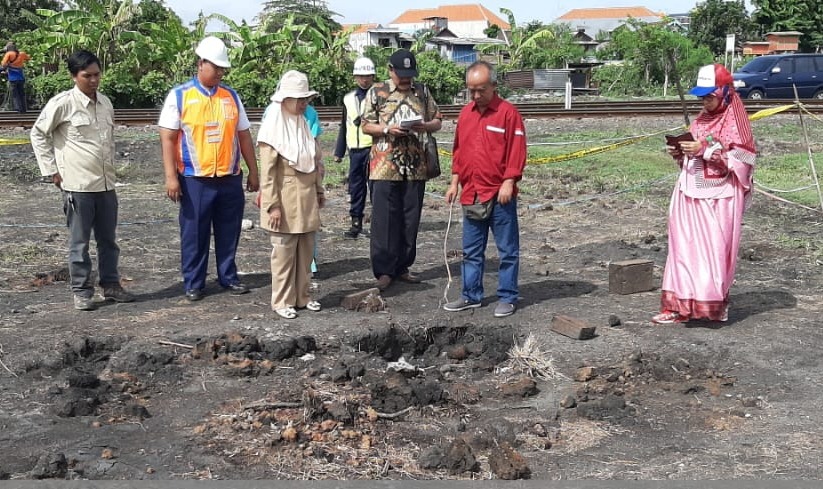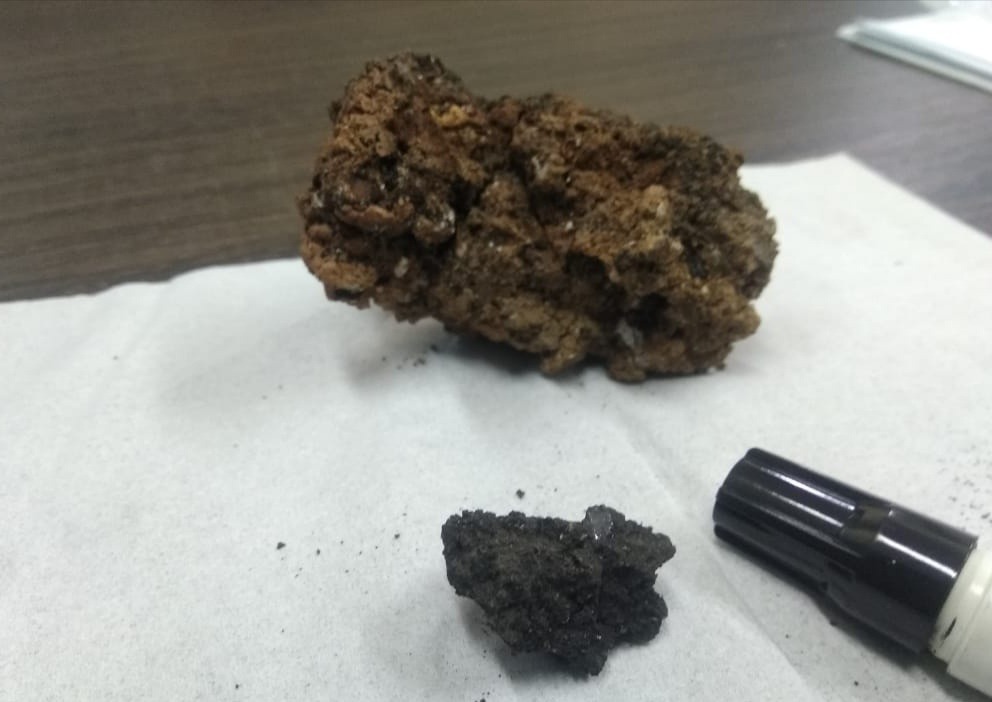Smoky Land in Dipo Sidotopo, ITS team Do The Joint Surveys

Dr. Ir Amien Widodo M Si (red shirt) with the team while visiting the area in Dipo Sidotopo, Surabaya to examine the smoky land
ITS Campus, ITS News — the phenomenon of smoky land in the Dipo Sidotopo Surabaya shocked the residents around, Saturday (4/1) ago. Therefore, the Department of Environment (DLH) of Surabaya City with a team from Institut Teknologi Sepuluh Nopember (ITS) surveyed to find out the cause of the phenomenon, Sunday (5/1).
The team from the Center for Disaster Mitigation and Climate Change (MKPI) research led by Dr. Ir Amien Widodo MSi consists of Dr. Ira Anjasmara, Juan Rohman ST MT, and Wien Lestari ST MT. This team with the DLH team in Surabaya visits the location, to see and taking soil samples that will further be tested in ITS Energy Laboratory. Amien admitted the smoke comes out of the ground until it burns the wood and the newspaper.
From the results of a visit on the field, the lecturer of the Departement of Geophysics Engineering and the team found some interesting facts. The smoky soil has different characteristics than the surrounding land. The smoky soil has a sand size, while the surrounding soil has the size of the clay from the alluvial deposition. “In terms of color also different, smoky soil is black and shiny,” he said.
Amien explained, the phenomenon is not only once happened in East Java. Previously, in the area of Kutisari, Surabaya, and Sampang, Madura also had a similar case. “Naturally, this area in East Java is a basin of oil and gas,” said the lecturer from Jogjakarta.
However, after being observed, Amien argued that the probability of smoky soil in the district of Sidotopo was not derived from natural gas. Amien believes this because the smoke is still normal. “The smoke is not huge, so it is not from natural gas,” he said.

Smoky soil samples from Dipo Sidotopo area, Surabaya
Continuing this, the alumnus of Gadjah Mada University (UGM) is presenting, several possible factors are causing the phenomenon. The first possibility is the existence of remaining coal dumped in the Dipo Sidotopo area. “This coal is derived from the remaining old-world railways and pile up so that smoke-out,” said the lecturer who actively researched the problem of this disaster.
Also, Amien said that a long drought can also be the other factor. “This long drought makes the pile of coal smoldering and removing smoke,” he explained.
Amien continues, another factor is the garbage from a few years ago that deliberately thrown into the area. The garbage then triggers the formation of biomass. “This biomass might cause the soil to smoke,” he said.
Amien tells that until now the soil samples from the Dipo Sidotopo were still researched along with involving several lecturers of the Department of Geomatics Engineering and also DLH Surabaya city. He hopes that this survey can help to give information to the local community so that people do not have to worry anymore when this phenomenon is repeated again. “We don’t have to be panicked, it’s a frequent and commonplace phenomenon,” he said. (dil/rev/ITS Public Relations)
Related News
-
Faithful in Times of Joy and Sorrow, Married Couple Graduate with Doctorates Together at ITS
ITS Campus, ITS News — As though guided by one heart and one soul, Dr Hanugra Aulia Sidharta ST
January 14, 2020 10:01 -
ITS Wins 2024 Project Implementation Award for Commitment to Gender Implementation
ITS Campus, ITS News —Not only technology-oriented, Institut Teknologi Sepuluh Nopember (ITS) also show its commitment to support gender
January 14, 2020 10:01 -
ITS Professor Researched the Role of Human Integration in Sustainable Architecture
ITS Campus, ITS News –The developing era has an impact on many aspects of life, including in the field
January 14, 2020 10:01 -
ITS Sends Off Group for Joint Homecoming to 64 Destination Areas
ITS Campus, ITS News — Approaching Eid al-Fitr, the Sepuluh Nopember Institute of Technology (ITS) is once again facilitating academics who want
January 14, 2020 10:01
